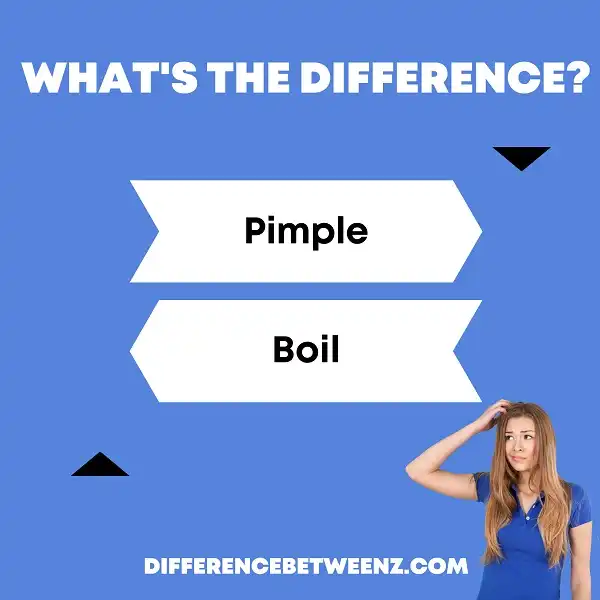Pimples and boils are both caused by bacteria, but they are different in their appearance and treatment. A boil is a large, painful lump that forms under the skin. Pimples are small, red lumps on the skin that are filled with pus. Both pimples and boils can be treated with antibiotics, but it is important to get the right diagnosis so you can receive the most effective treatment. See your doctor if you have any questions about whether you have a pimple or a boil.
What is Pimple?
Pimple is a small, raised spot on the surface of the skin that is typically red or white. Pimples are caused by the buildup of sebum, an oily substance produced by the sebaceous glands. When sebum combines with dead skin cells and dirt, it can clog pores and hair follicles, leading to the formation of pimples. Pimples can occur on any part of the body, but they are most commonly found on the face, neck, back, and chest. Pimples can be unsightly and painful, but there are a variety of treatments available to help treat them. In most cases, pimples will go away on their own within a few days or weeks. However, severe or persistent acne may require medical treatment.
What is Boil?
Boils are a skin infection that starts in a hair follicle or oil gland. Boils most often occur on the face, neck, buttocks, and underarms. Boils are usually caused by the bacteria Staphylococcus aureus (staph).
- Boils may develop in anyone at any age, but they are most common in preteens and teens. recurrent Boils tend to run in families. A Boil (furuncle) is a deep bacterial infection of a hair follicle. Boils begin as tender, pink bumps that turn red over time.
- They then fill with pus and grow larger. Boils can be painful and make it hard to move the affected area. Over time, the pus-filled center of the Boil comes to resemble a blackhead and eventually opens up, draining pus and blood.
- Once open, Boils generally take two to three weeks to heal without scarring unless they become infected or don’t drain properly. Anyone can get Boils, but people with weak immune systems, diabetes or poor hygiene are especially susceptible. People who have had Boils before are also more likely to experience them again in the future.
- Treatment for Boils generally involves draining the pus using a small needle or lancing the Boil open with a sharp blade. Antibiotic ointments may also be prescribed to help prevent infections.
- Severe cases of Boils may require hospitalization and intravenous antibiotic therapy. Helping to prevent Boil outbreaks is essential for people who tend to get them frequently since they can cause serious health complications if left untreated.
Taking good care of your skin and practicing good hygiene are key preventive measures. If you think you might have Boils, it’s important to see a doctor as soon as possible so that they can be properly diagnosed and treated before they cause any further harm.
Difference between Pimple and Boil
Pimples are small, raised bumps on the surface of the skin. They are often red and filled with pus. Pimples occur when the pores of the skin become plugged with sebum, a type of oil produced by the sebaceous glands. Boils, on the other hand, are large, pus-filled lumps that develop when an infection occurs in a hair follicle or sweat gland. Boils are often very painful and can take several weeks to heal. Both pimples and boils can be treated with over-the-counter medications, but boils may require antibiotics to clear the infection.
Conclusion
In conclusion, it is important to be able to distinguish between a pimple and a boil. While they may look similar, the treatments for each are different. If you are unsure of which one you have, please consult a healthcare professional for treatment advice.


